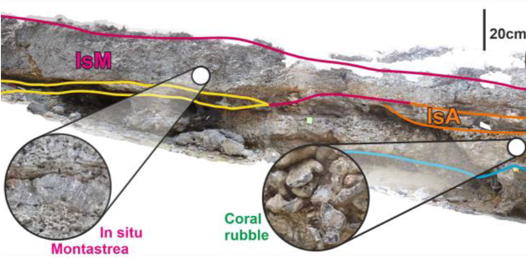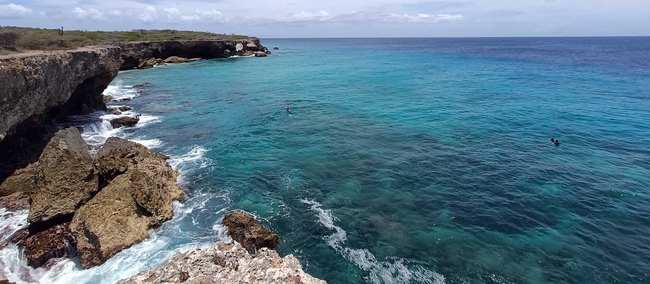Overview
Fossil coral reefs, that were living in past warm periods, can provide several insights on former climates. In turn, these can be used to gauge the sensitivity of different components of the Earth's system to future climate changes.
In this project, we propose to investigate a set of very well-preserved Pleistocene reefs in the Southern Caribbean, on the islands of Aruba, Curacao and Bonaire. We aim to build both underwater and on-land virtual outcrops and use them to compare the taxonomic community structure and the distribution of coral traits between modern and fossil reefs. We want to know if the reefs we will investigate are different from their modern counterparts, and why.

Figure 1: Section of a photomosaic, with interpretation of the paleo reef units of MIS 7 and MIS 5e age (originally by A.K. Petersen, edited by A. Rovere).
To answer this question, we will have to push the boundaries of current survey methods, investigate the possibility to measure coral traits from fossil corals and find novel ways to enable modern/paleo reef quantitative comparisons. This endeavor will result in substantial advances in how paleoecological field studies are approached and will give us new insights on paleoenvironmental changes in the Southern Caribbean region.
Project Partners |
|---|
|
Christian Wild (University of Bremen) Alessio Rovere (Università Ca' Foscari Venezia) Patrick Boyden (MARUM) |





